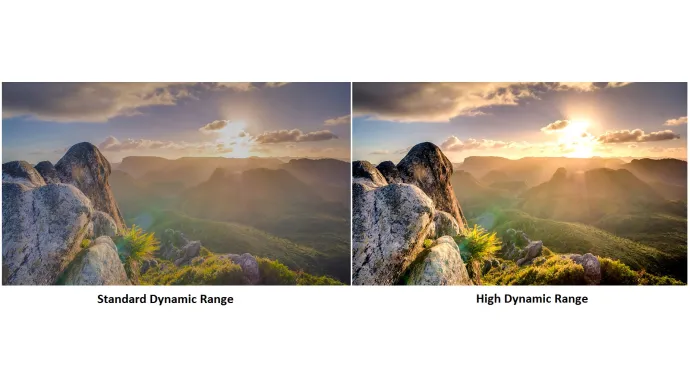What is 4K Resolution? (Explained in Detail)
In this article, we’ve explained what is 4k resolution in-depth with a variety of examples. 4K sounds like something advanced technology of HD which is not well explained to many of tech enthusiasts.
Simply put, 4K and Ultra HD offer four times the resolution of Full HD. Full high definition (FHD) resolution is often defined as 1,920 by 1,080 pixels (a total of 2,073,600 pixels). Screens with a resolution of 3,840 by 2,160 pixels are considered Ultra HD or 4K (a total of 8,294,400 pixels). A higher pixel count means more detail was captured in the photo.
Because of the difference in pixel counts, 4K HDTVs often come in bigger screen sizes than Full HD models, although the superiority of a 4K image over a Full HD one is apparent even when both screens are the same dimensions. When compared side by side, a Full HD image will normally seem flattered and softer, while a 4K picture will bring forth more detail and superior colour grading, making the picture crisper and more colourful.
In addition to a larger resolution, the faster frame rate and more accurate colour reproduction made possible by 4K and Ultra HD provide for a more “realistic” picture. In comparison to Full HD’s 8-bit colour depth, 4K and Ultra HD TVs offer 10 and 12-bit colour depth, respectively. That more colours can be shown on a 4K screen implies that images will look more accurate.
Smoother action scenes and a crisper image during fast-paced scenarios like those in an NFL game or the newest Fast & Furious movie are only two of the benefits of increasing the frame rate to 60 frames per second. Current TV is transmitted at 25 frames per second (films are presented at 24), thus the increase in frame rate is apparent and may seem odd at first, but it is an improvement.
Also Read: What is Time Management? Best Tools and Apps
What is the definition of 4K HDR?
When trying to get your head around 4K, Ultra HD TVs, and 4K content, you should also learn about 4K HDR (high dynamic range). Waiting for HDR-enabled televisions to drop in price is a good idea because not all 4K Ultra HD TVs have HDR capabilities.

High dynamic range (HDR) photography is predicated on a high contrast ratio. The dynamic range of a picture is the span between its darkest and brightest tones. This feature, similar to the high dynamic range (HDR) setting on your smartphone camera, makes both dark and light regions of an image stand out without detracting from the overall picture quality. In motion, 4K HDR is breathtaking.
While some stores may advertise their Full HD displays as HDR-capable, the technology is not yet available for Full HD panels. When they say they’ve employed contrast technology to simulate HDR’s effects, they mean just that. If the 4K Ultra HD TV you purchase has HDR capabilities, you will be able to take use of this feature.
Where Can You Watch 4K Video?
More and more services are starting to provide 4K video, with Netflix and YouTube serving as examples. Both Amazon Prime Video and Sky Q are capable of streaming in 4K resolution. You can also acquire 4K Blu-ray players, or just get an Xbox One X with native 4K or an Xbox One S with upscaled 4K if you’re so inclined. The original PlayStation 4 does not support 4K resolution, however Sony’s upgraded PS4 Pro does.
The BBC has also taken the plunge into 4K content with the release of the whole Blue Planet 2 series in 4K shortly after each episode aired on BBC One. As long as they had a connection fast enough to push the pixels, more than 400 devices were included in the testing. After then, BBC declared that it will air the World Cup in 4K.
All of the aforementioned services are compatible with 4K HDR, but you’ll need an HDR-enabled Blu-ray player and an HDR-encoded Blu-ray disc to watch content in this format. Not all PS4 Pro titles have been updated to support 4K HDR. Although the base PS4 and Xbox One S do not natively support 4K, they are nonetheless capable of HDR output for games that run at Full HD.




